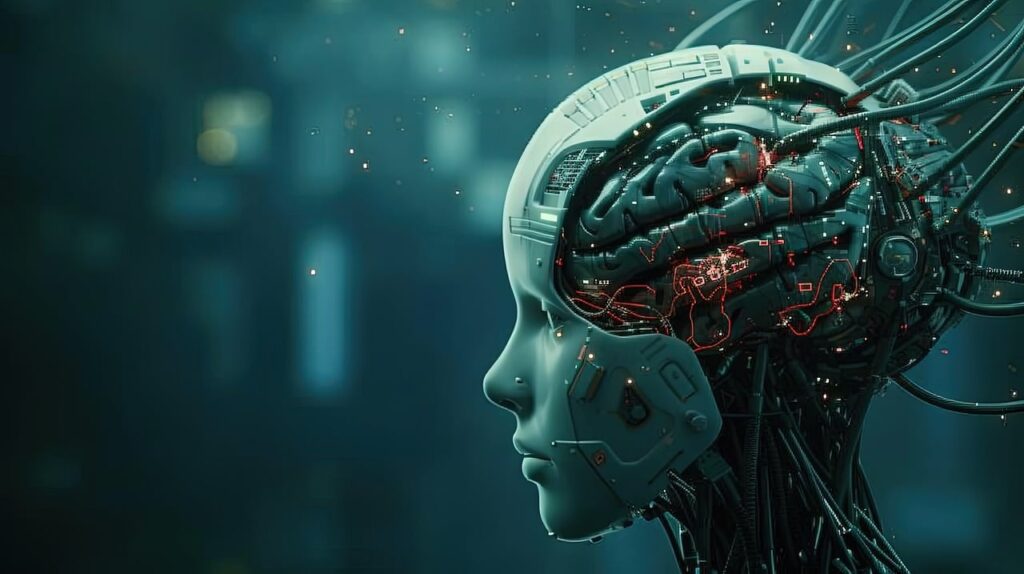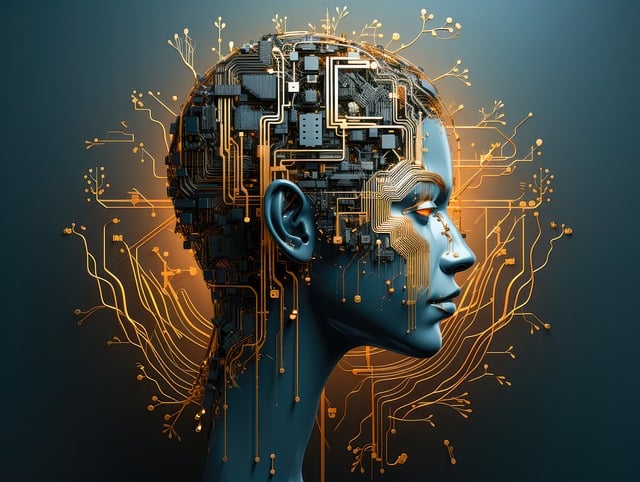Introduction
Hey there! Have you ever wondered how your smartphone can recognize your face, or how Netflix seems to know exactly what you want to watch next? Well, that’s all thanks to something called machine learning. It’s a buzzword you’ve probably heard a lot lately, but what exactly is machine learning, and why is it so important? Let’s dive in and find out!
What is Machine Learning?
Machine learning (ML) is a branch of artificial intelligence (AI) that focuses on the development of algorithms that allow computers to learn from and make decisions based on data. In simpler terms, it’s about teaching machines to think and learn just like humans do, but with the added benefit of processing vast amounts of information quickly and accurately.
Imagine teaching a child to recognize a cat. You’d show them several pictures of cats and point out the features that make a cat, well, a cat. Similarly, in machine learning, we feed the computer a large number of images (data) and let it figure out the patterns (learning) to identify a cat on its own.
Why Machine Learning Matters
Machine learning is everywhere, and it’s revolutionizing the way we interact with technology. From personalized recommendations on shopping sites to sophisticated medical diagnoses, ML is making our lives easier, more efficient, and more enjoyable. It helps businesses make smarter decisions, improves customer experiences, and even contributes to scientific discoveries.
Think of machine learning as the brain behind self-driving cars, virtual assistants like Siri and Alexa, and even fraud detection systems in banking. Without ML, many of the technological conveniences we take for granted today wouldn’t be possible.

Types of Machine Learning
There are three main types of machine learning: supervised learning, unsupervised learning, and reinforcement learning. Each type has its own unique approach to learning from data.
Supervised Learning
Supervised learning is like a teacher guiding a student. The machine is given a set of labeled data, meaning each piece of data comes with the correct answer. The machine’s job is to learn the relationship between the input data and the output labels. Once trained, it can predict the output for new, unseen data. For example, if we want to teach a machine to recognize emails as spam or not spam, we would provide a dataset of emails labeled as “spam” or “not spam.” The machine learns from this data and can then classify new emails accordingly.
Unsupervised Learning
In unsupervised learning, the machine is given data without any labels or correct answers. It’s like exploring a new city without a map. The machine tries to find hidden patterns and relationships within the data on its own. One common application of unsupervised learning is customer segmentation. Businesses can use it to group customers with similar behaviors, helping them tailor marketing strategies to different customer segments.
Reinforcement Learning
Reinforcement learning is all about learning through trial and error. The machine interacts with an environment and learns by receiving rewards or penalties based on its actions. It’s similar to how we learn from our mistakes and successes. A great example of reinforcement learning is teaching a robot to play a game. The robot makes moves, learns from the results, and improves its strategy over time to maximize its score.

Key Concepts in Machine Learning
To understand machine learning better, let’s explore some key concepts that form the foundation of this fascinating field.
Algorithms
Algorithms are the heart of machine learning. They are sets of rules or instructions that machines follow to learn from data. There are various algorithms, each suited for different types of tasks. Some popular algorithms include decision trees, support vector machines, and neural networks.
Data
Data is the fuel for machine learning. The more data a machine has, the better it can learn and make accurate predictions. Data can come in many forms, such as numbers, text, images, and audio. It’s essential to have high-quality, diverse data to train effective machine learning models.
Training and Testing
Training is the process of teaching a machine learning model using a dataset. Testing, on the other hand, involves evaluating the model’s performance on new, unseen data. A good model should perform well on both training and testing data to ensure it can generalize to real-world scenarios.
Features
Features are the individual attributes or characteristics of the data that the machine uses to make predictions. For example, in a dataset of houses, features could include the number of bedrooms, square footage, and location. Selecting the right features is crucial for building accurate models.
Applications of Machine Learning
Machine learning has a wide range of applications across various industries. Here are some of the most exciting and impactful ones:
Healthcare
In healthcare, machine learning is being used to diagnose diseases, predict patient outcomes, and personalize treatment plans. For instance, ML algorithms can analyze medical images to detect early signs of cancer or other conditions, improving the chances of successful treatment.
Finance
The finance industry relies heavily on machine learning for fraud detection, algorithmic trading, and credit scoring. ML models can analyze transaction patterns to identify fraudulent activities in real-time, protecting both businesses and consumers.
Retail
Retailers use machine learning to enhance customer experiences and optimize operations. Personalized recommendations, dynamic pricing, and inventory management are just a few examples of how ML is transforming the retail sector. By analyzing customer behavior, retailers can offer tailored promotions and improve customer satisfaction.
Transportation
Machine learning plays a crucial role in autonomous vehicles, traffic management, and predictive maintenance. Self-driving cars use ML algorithms to navigate roads, avoid obstacles, and make real-time decisions. ML also helps in predicting maintenance needs, reducing downtime, and ensuring safety.
Entertainment
In the entertainment industry, machine learning powers recommendation systems, content creation, and audience analysis. Streaming services like Netflix and Spotify use ML to suggest movies, shows, and music based on user preferences, keeping audiences engaged and satisfied.
Challenges in Machine Learning
Despite its numerous benefits, machine learning comes with its own set of challenges:
Data Quality and Quantity
For machine learning models to be effective, they require large amounts of high-quality data. Collecting and curating this data can be time-consuming and expensive. Additionally, biased or incomplete data can lead to inaccurate predictions and unintended consequences.
Overfitting and Underfitting
Overfitting occurs when a model learns the training data too well, including noise and outliers, which leads to poor performance on new data. Underfitting, on the other hand, happens when a model is too simple to capture the underlying patterns in the data. Balancing between these two extremes is crucial for building robust models.
Interpretability
Machine learning models, especially complex ones like neural networks, can be difficult to interpret. Understanding how a model makes decisions is essential, particularly in fields like healthcare and finance, where transparency is critical.
Ethical and Privacy Concerns
As machine learning becomes more integrated into our lives, ethical and privacy concerns arise. Ensuring that ML systems are fair, transparent, and respectful of user privacy is paramount. This includes addressing issues like algorithmic bias and data security.
The Future of Machine Learning
The future of machine learning is incredibly promising. As technology advances, we can expect even more innovative applications and improvements in existing ones. Here are some trends to watch out for:
AI and ML Integration
The integration of AI and ML will continue to grow, enabling more sophisticated and intelligent systems. This will lead to smarter virtual assistants, advanced robotics, and enhanced decision-making processes in various industries.
Edge Computing
Edge computing involves processing data closer to the source, reducing latency and improving efficiency. Combining edge computing with machine learning will enable real-time analysis and decision-making, particularly in IoT (Internet of Things) applications.
Explainable AI
As the demand for transparency increases, explainable AI will become more critical. Developing models that can explain their reasoning and decisions will help build trust and ensure ethical use of machine learning.
Continual Learning
Continual learning, or lifelong learning, allows machines to learn continuously from new data without forgetting previous knowledge. This will lead to more adaptive and resilient systems capable of handling changing environments and evolving tasks.
Conclusion
Machine learning is a powerful and transformative technology that is reshaping our world. From healthcare to entertainment, its applications are vast and varied, offering numerous benefits and opportunities. Understanding the basics of machine learning, its types, key concepts, and challenges is essential as we move forward in this rapidly evolving field. Embracing machine learning responsibly and ethically will unlock its full potential, making our lives smarter, more efficient, and more enjoyable.
